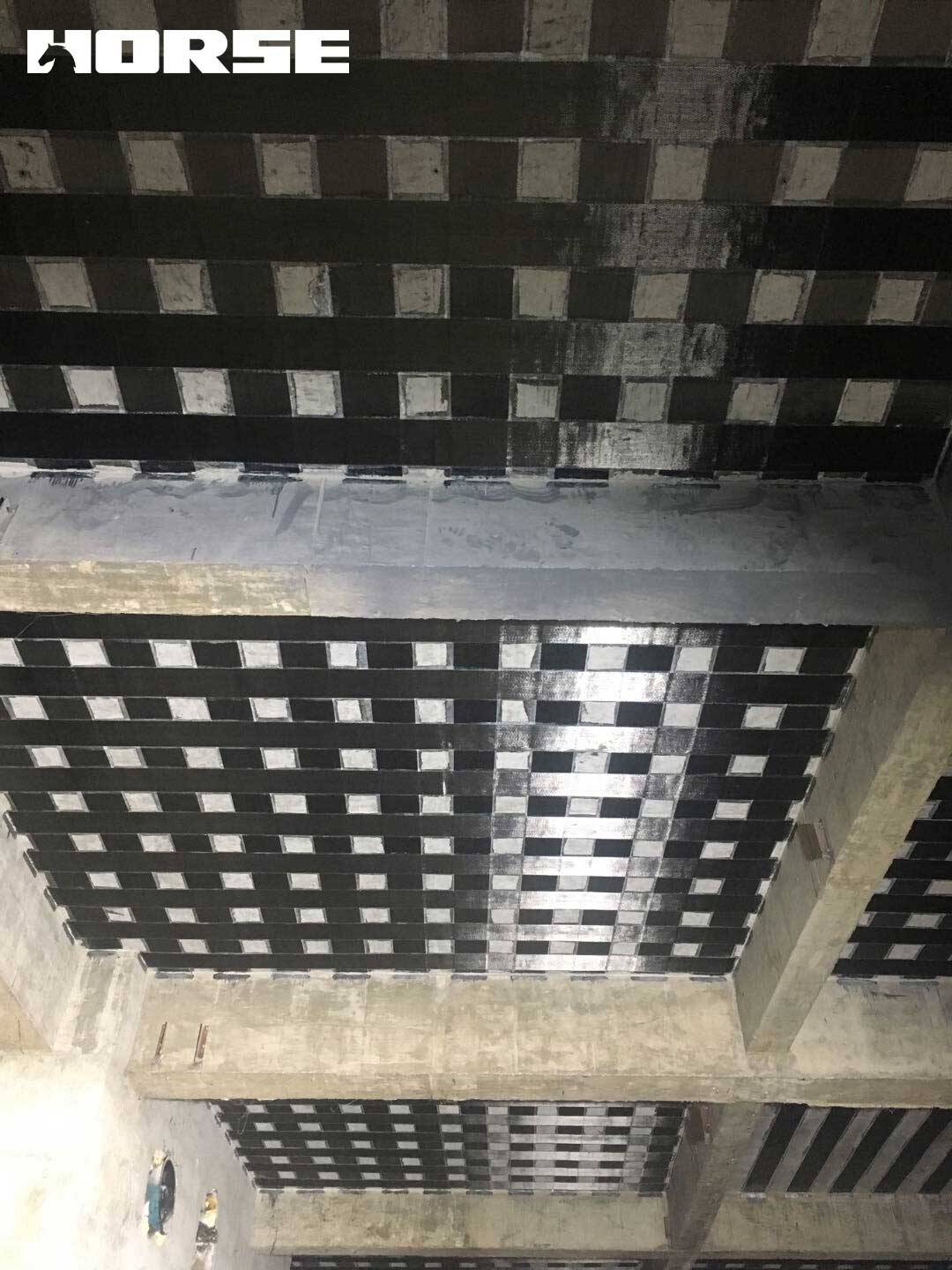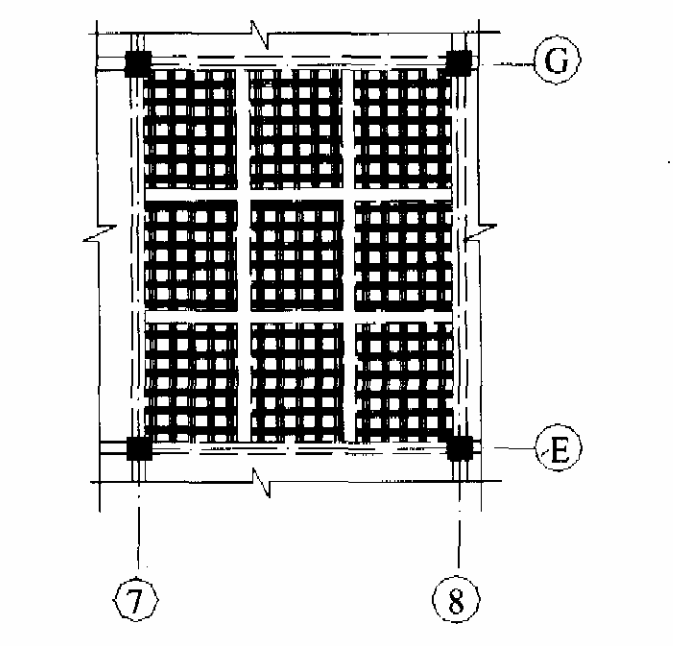Solutions
Horse Construction offers full range of structural strengthening materials with technical supports, documentation supports, products supports, project supports.
Reinforcement of cracks in floor of industrial workshop with carbon fiber

Project Overview
An industrial plant has a three-story frame structure with a construction area of 16,000 square meters. The thickness of the cast-in-place concrete floor is 120mm, the design strength is C30, and the upper and lower layers are reinforced. A 50-thick plain concrete cushion is poured on top, and a 0.3mm thick epoxy resin surface layer. The concrete is mixed on site and pumped to the floor. About half a year after the completion of the project, in the course of use, the construction unit found a large number of cracks on the floor, with a crack width of 0.5 to 1.5 mm. In order to ensure the safe use of the plant, the construction unit put forward the requirements for the identification and reinforcement of the floor.
On-site test results
The stiffness of the secondary beam is smaller than that of the main beam, so the deformation of the floor slab is mainly related to the deformation of the main beam, and the crack distribution at the site also reflects this feature.
On-site cracks include diagonal cracks (Figure 1), annular cracks (Figure 2), flower-shaped cracks (Figure 3), radial cracks (Figure 4), and beam-top cracks (Figures 3 and 4). Diagonal cracks are mainly distributed in the four corners of the plant, and other cracks exist in the middle of the grid. It can be seen from the figure that the floor cracks extend from the surface layer to the structural layer, and the width gradually decreases.

Concrete radars were used to conduct random checks on the reinforcement of the floor slabs, and the diameter, number, and spacing of the steel bars could meet the design requirements. However, the upper row of steel bars in the floor slab generally moves downward, with an average downward movement of 20mm and a maximum downward movement of 50mm.
Analysis of the causes of cracks
Floor cracks are caused by improper construction. The main reason is that the strength of the concrete is low and the negative bending distance steel bar is moved down, which makes the bending bearing capacity around the floor support insufficient.
This is because
(1) The width of the crack is narrow and the width is narrow.
(2) Cracks mostly appear on the edge of the column and around the grid, but less in the middle of the grid
(3) The time when cracks appear is after using the plant for a period of time, after using the load, this can be distinguished from the early shrinkage cracks that develop faster
Of course, the effects of shrinkage cracks also exist. The large water-cement ratio during construction is the main reason for the shrinkage of concrete. The oblique cracks in the four corners of the factory building and the annular cracks in the middle are the results of the combined effect of insufficient bending capacity and concrete shrinkage.
There is a 50mm thick plain concrete cushion layer on the floor structure layer, and there is no reinforcement in the cushion layer, which aggravates the crack development.
Reinforcement treatment plan
Because there is a post-cast layer on the floor, and the combination of the post-cast layer and the structural layer is poor, it is difficult to take reinforcement measures on the upper part of the floor. However, after cracking at the negative rib, plastic deformation occurs and the positive bending distance increases across the span. Therefore, it should be considered to increase the bending capacity of the bottom of the slab.
The construction unit hopes that the reinforcement construction will reduce the impact on production as much as possible, the construction speed should be fast, and there is a requirement for high cleanliness in the workshop, and the wet operation should be used as little as possible, so the bearing capacity for bending is insufficient and clear. The vibrating area is reinforced with a layer of HM-20 type carbon fiber cloth on the bottom of the slab, as shown in Figure 8.

Cracks on the floor will affect the durability of the components, and the treatment plan of HM-120L pressure grouting is adopted.
You can find anything here you are in need of, have a trust trying on these products, you will find the big difference after that.

High strength carbon fiber reinforced polymer (CFRP) strip / laminate / plate for structural strengthening and concrete repair

High strength, unidirectional carbon fiber fabric pre-saturated to form a carbon fiber reinforced polymer (CFRP) fabric used to strengthen structural concrete elements.

High strength, unidirectional carbon fiber sheet pre-saturated to form a carbon fiber reinforced polymer (CFRP) sheet used to strengthen structural concrete elements.